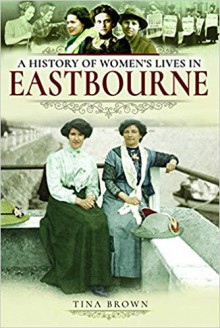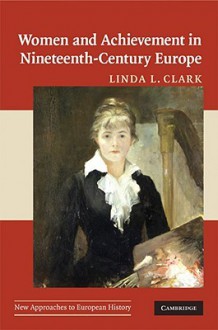
Thanks to Rosie Croft from Pen & Sword for sending me an early paperback copy of this book, which I freely chose to review.
This book is one of a series about Women’s Lives, and I recommend you check Pen & Sword’s website if you are interested in a particular city or area, as a large number of books have already been published and you’re likely to find a relevant one (or one might be on the making). I had been intrigued by the collection for a while and finally requested this one because my first job as a junior doctor was in Eastbourne, East Sussex, in the South East of England, I remained in the area for quite a few years and although I visited museums and talked to people about the place, I didn’t learn much about the role of local women and their lives in the past.
Eastbourne felt quite different to what I was used to when I first move there, with its gentile atmosphere, the seafront, the fancy (if somewhat old-fashioned) hotels, the Victorian pier, and the natural beauty of the Downs and Beachy Head. As the author explains in the description, the book centres on the lives of women from 1850 to 1950, and it also offers a brief but useful background into the history of the period. Although this will not cover new ground for history experts, it will help casual readers place the lives of these local women in context, and it contains gems specific to the local history and to the women´s social history, and it also incorporates previously unpublished personal accounts and those narrated by relatives and friends of women who had lived in the area.
The book is divided into an introduction, seven chapters, a brief bibliography (a good starting point but not too lengthy or detailed), a section of acknowledgments, and an index. The book also includes pictures and illustrations, some belonging to the personal archives of some of the women mentioned, and also postcards and landscapes of the area. I highlighted many details I found interesting as I read it, and I thought I’d share some of those to give you an idea of the kinds of things you might find in this book (and probably others in the series). Chapter One, Education and Professional Life includes, like other chapters, brief biographies of some local women (either women born in Eastbourne or who lived there for significant periods of time), such as Emily Phipps, who studied for the bar and later moved into teaching. She was said to live by this saying: ‘If you make yourself a doormat, do not be surprised if people tread on you’, and Rosalie Harvey, a medical missionary worker, who helped over 1500 sick people, many children and babies, and animals.
Chapter 2, Working Life, included a mention of the life of female smugglers in Eastbourne, the way the people from town helped families affected by WWI, and the touching story of a woman whose biological father was a Canadian soldier in WWII whom she never got to meet, who considered herself lucky because her mother’s husband (who was also a soldier and away for most of the war) accepted her as if she were his own child, and in fact she never discovered she wasn’t his until she was 22. One of the biographies included in this chapter is that of writer and journalist Angela Carter, who was born in Eastbourne.
Chapter 3, Family Life: ‘Home Sweet Home’, highlights how society’s rules and political laws curtailed women’s freedom in all aspects of life, even when it came to dress and fashion. Getting a divorce was very difficult for women, even after changes in the law in the late 1850s and in the 1920s. Having recently read a book about Lady Astor and her penchant for fashion, I found out in this chapter that Queen Victoria wore a headdress made of bird feathers in 1851 and that sprung a fashion (and resulted in the deaths of a very large number of birds). Reading about the change brought to the lives of women by a minor invention, such as the electric iron, made me reflect upon how hard tasks that might seem easy now were for our ancestors. This chapter also includes imaginative and resourceful war-time recipes, and it mentions the good reputation of Eastbourne schools and, in particular, Eastbourne College (a wonderful building I lived quite close to for a while).
Chapter 4, Quality of Life, talks about the changes brought by the NHS, efforts in welfare, and reforms to the workhouse, and the important role women played in those.
Chapter 5, Social Life, is one of my favourites, and includes some gems, such as the fact that nearby, in Bexhill-on-Sea (where I also worked) in 1901, male and female bathers were allowed to mix in the same beach for the first time. The chapter talks in detail about the Eastbourne Pier (I only knew some details of its history and had heard about the controversy caused by its recent refurbishment, but I haven’t seen it since, so I dare not comment); it also mentions the well-known female tennis tournament at Devonshire Park, and I was very taken by the brief biography of Emily Mary Shackleton, who moved to Eastbourne, and when her famous husband died during one of his expeditions, was left to fend for herself with a considerable debt to settle. She worked tirelessly for the Red Cross and became divisional commissioner for the Girl Guides of Eastbourne. The Luxor cinema was before my time, but from the description I would love to have seen it, and it had a Compton Organ, a fantastic instrument I was lucky to get to hear at the Penistone Paramount (don’t miss it if you are anywhere near).
Chapter 6, Political Life, places an emphasis on the local suffragist movement and some of the women who took part, including some of their heart wrenching accounts of being imprisoned and going on hunger strike, the way the attempts at reforming gender discriminatory laws were received, the first women mayors of the area, and such puzzling things as the fact that the Society for the Prevention of Cruelty to Children wasn’t formed until 1891, almost seventy years after the formation of the Society for the Prevention of Cruelty to Animals.
Chapter 7, Spiritual and Religious Life, talks not only about the churches in Eastbourne, how new denominations became more popular as time passed, and also how the churches started organising social events, clubs and activities for all ages. This chapter also includes mentions of three ghosts: the redoubt fortress one, the one at Devonshire Park Theatre, and two nurse ghosts at the All Saints Hospital. I have heard about some of them, and considering the author has written books on that topic, I would take it in good authority.
I enjoyed the combination of general history with local events, the biographies of the local women, and, especially, the personal accounts of women who had lived in Eastbourne at the time and shared their experiences (or those passed on by their relatives) with the author. As I have said before, those are the kinds of details that help history come to life and make us understand what a period was truly like, not for politicians and royals, but for the people in the street.
As this is the first book I read in the series, I cannot compare it to others, and I know each one of the volumes is written by a local historian, so their approaches might be quite different. Mine was an early review copy, and I’m sure there will have been changes in the final version, but my only recommendation, based on the copy I had access to, would be to ensure that the biographies are clearly marked as separate from the rest of the text (by using a different type of letter or by encasing them in a box, for example), as currently they are interspersed with the rest of the content of the chapter, and it is not always easy to tell where one finishes and the other one starts again. Some of the topics overlap with each other and that makes the chapters perfect for reading independently, although it results in similar content being mentioned in several chapters when the book is read in one go, but I did not find this a major problem.
I enjoyed this book, which is informative, entertaining, and inspiring, and includes enough information about the general and social history of the period to be suitable for any readers, even those who don’t generally read history. At the same time it contains a wealth of information on the local history of women in Eastbourne, which will satisfy those trying to get a picture of the era, be it for personal interest, research, or as part of an ongoing project (Writers, I’m looking at you). I recommend this title to anybody interested in any of those aspects, and I will be checking other titles in the series.

 Log in with Facebook
Log in with Facebook 









